In the ever-evolving, dynamic business landscape, communication and clarity are essential for success. Comprehensive documentation is a powerful tool that can empower corporations to attain these goals. By capturing and conveying vital data, processes, and policies, comprehensive documentation provides a valuable source of reference for personnel, promotes collaboration across teams, lowers legal risks, and enables knowledge transfer. In this article, we explore the nuances of comprehensive documentation and its role in facilitating smooth business operations. We offer an abundance of tips, best practices, and tools to help businesses hone their documentation practices and reap the benefits of improved efficiency and productivity.

Types of business documentation
Internal documentation
Internal documentation acts as a vital communication tool within an organization, catering to the needs of its employees. Let’s explore three key types of internal documentation.
Employee handbooks and policies
Employee handbooks are designed to empower employees by giving them crucial information, from codes of conduct and leave policies, to performance evaluation procedures. They cultivate a culture of fairness, trust, and consistency throughout the organization — a solid foundation for a successful workplace to be built upon. By providing comprehensive assistance in navigating company regulations and protocols, they ensure every member of the team feels welcomed, respected, and well-equipped to thrive.
Standard operating procedures (SOPs)
SOPs are comprehensive protocols that enable businesses to maintain efficiency and accuracy in their operations. By delivering precise, step-by-step instructions for a range of activities, from customer service to quality control, these standardized procedures help optimize performance, minimize errors, and achieve maximum productivity.
Training materials
Training materials are indispensable for onboarding and professional growth. Comprehensive packages of training manuals, presentations, online lessons, and interactive programs provide employees with the skills they need to succeed. Detailed instructions ensure uniformity in learning and allow personnel to access critical knowledge whenever they need to.
External documentation
In addition to internal documentation, businesses also rely on external documentation to communicate with stakeholders outside the organization. Here are three key types of external documentation.
Contracts and agreements
Forming a business relationship demands serious consideration and commitment. Crafting an accurate contract is the surefire way to ensure both parties understand their rights, responsibilities, and obligations. These documents provide a framework to guide the dynamics of the partnerships, no matter what their purpose may be — client agreements, vendor agreements, or employment contracts. Writing an effective agreement not only offers legal protection, but also lays the groundwork for a productive and mutually beneficial relationship.
Proposals and presentations
Proposals and presentations are invaluable tools designed to communicate an organization’s ideas, solutions, and business opportunities to external stakeholders. They are crafted to effectively convey the value proposition, key benefits, and strategies required for achieving the desired outcomes. To win over prospective clients, investors, and partners, these documents must contain precise, visually stimulating information that persuasively illustrates how the business stands out compared with its competitors.
Reports and analysis
Accurate information is essential for successful decision-making. Analysis and reports provide crucial data and insights to guide decisions. These documents may include financial reports, market research results, performance metrics, and feasibility assessments. With well-crafted documents, stakeholders can gain a full understanding of the business’s position, spot trends, and then make sound decisions.

Benefits of comprehensive documentation
Enhances communication
Comprehensive documentation provides a clear picture of roles and responsibilities, facilitates efficient task performance, and helps cultivate harmony among team members. Documentation also ensures that everyone shares a unified knowledge-base, enabling them to effectively collaborate and coordinate tasks. This streamlined approach to communication helps ensure accuracy across all facets of the organization, resulting in improved workflow efficiency, better teamwork, and superior results.
Promotes consistency and accuracy
Comprehensive documentation reduces potential errors by providing employees with easy-to-follow instructions that result in greater efficiency and quality results. It also serves as a powerful tool for making decisions, providing stakeholders with access to comprehensive records, data, and insights to empower evidence-based analysis.
Reduces legal and compliance risks
Comprehensive documentation is essential for minimizing risk and safeguarding the interests of a business. Not only does it protect valuable intellectual property by establishing ownership and providing evidence of rights, but also demonstrates compliance with regulatory requirements. This tangible evidence enables organizations to pass audits with minimal disruption and may even prevent costly litigation in cases of dispute. By thoroughly documenting interactions, transactions, and other pertinent information, businesses can remain confident that their assets are secure and that the risks associated with non-compliance are significantly reduced.
Facilitates knowledge transfer and succession planning
By preserving and documenting their processes, procedures and best practices, organizations can ensure that institutional knowledge is transferred effectively between employees and teams. This serves as a convenient resource for incoming staff, facilitating their integration into the organization and allowing them to rapidly contribute to operations. Moreover, well-documented information supports scalability and lends itself to the standardization of procedures, eliminating discrepancies between different divisions or regions. Additionally, meticulously documented records provide an excellent foundation for employee learning and development, giving them the ability to analyze existing material and adapt it to new contexts or requirements.
Best practices for comprehensive documentation
Businesses can have comprehensive documentation by following best practices that ensure effectiveness and efficiency.
Define documenting objectives and scope
Accurately documenting processes and information is essential for the success of an organization. To do this effectively, it’s important to ensure the documenting objectives and scope are clearly defined. Undertaking a comprehensive analysis of operations helps to identify the core aspects that need to be documented. Establishing targets provides a framework for guiding the documentation process and allows the results to be evaluated. Without them, it’s impossible to measure the outcomes.
Standardize documentation formats and templates
Consistency is a cornerstone of successful documentation. Carefully crafted formatting and structural guidelines ensure documents are clear, comprehensive, and user-friendly, while showcasing the organization’s professional image and strengthening its brand identity. Reusable templates provide a time-saving foundation for employees to customize based on specific needs, with predefined sections and formatting styles that guarantee consistent presentation of vital information.
Incorporate visual aids and examples
Understanding complex information can be made easier and more engaging by leveraging visual aids and examples. Diagrams, charts, and infographics are invaluable tools for providing visual representations of data, enabling the audience to clearly understand processes and relationships. Additionally, organizations should incorporate real-life examples to enhance the connection between theory and practice. With solid, relatable scenarios that showcase concepts in practical situations, comprehensive documentation becomes much more accessible and dynamic.
Ensure accessibility and ability to search
Organizations seeking to optimize the accessibility and ability to search their documentation should implement an efficient file naming system. The use of descriptive labels which accurately reflect the document’s content, purpose, and version is key to a successful sorting strategy. By maintaining a consistent framework for file titles, users can quickly and effectively pinpoint the information they need, streamlining searches and eradicating any confusion.
The value of tagging and indexing cannot be underestimated. Tags provide keywords and labels for documents to enable searching, while indexing structures and organizing large volumes of information for easy access. This allows users to instantly retrieve relevant documents through keyword searches or browsing tags, and simultaneously aids in creating efficient pathways through the cataloged material. In essence, these systems allow for higher productivity through simplified document navigation and storage.
Regularly review and update documentation
Periodic reviews of existing documentation are essential for preserving accuracy and relevancy. To ensure the documents stay current, organizations should conduct audits on a regular basis to assess correctness and detect any out-of-date or inaccurate material. These audits guarantee that the documents conform to present procedures, regulations, and practices. Likewise, they provide an opportunity to recognize potential issues and rectify any discrepancies or holes in the documentation. Moreover, stakeholders, such as staff members, administrators, and relevant experts should be actively engaged so that feedback and suggestions may be gathered. Leveraging stakeholders’ involvement in this review allows organizations to obtain valuable insights and pinpoint which areas require clarification or updates. This shared approach guarantees that the documentation is tailored to meet stakeholders’ needs and contains the most precise and recent information available.

Tools and technologies for efficient documentation
Document management systems
Harnessing the power of a document management system (DMS) ensures maximum efficiency in organizational documentation. DMS platforms provide businesses with a host of features and advantages, including version control, collaborative editing, advanced search capabilities, and automated workflows that streamline processes. Comprehensive access controls and document sharing functions ensure organized storage and facilitate smooth collaboration across departments. Ultimately, utilizing these technologies can significantly reduce manual work, boost productivity, and optimize the efficacy of documentation operations.
It is essential to analyze your business’ needs before procuring a document management system. Assess the scale and intricacy of your documents, the user count, integration compatibility with existing applications, security parameters, and scalability. This will help identify the optimal fit for your organization. Moreover, characteristics, such as ease-of-use, customer service, and cost-efficiency must also be taken into consideration for seamless implementation and successful user adoption of the selected DMS. For a comprehensive solution, you can explore document storage solutions like FileCenter’s Document Management Software.
Automation and workflow solutions
Automation and workflow solutions are indispensable in achieving swift and smooth documentation processes. Incorporating these solutions into your system can bring about several advantages, including the streamlining of how documents are created and delivered. Automating time-consuming tasks enables companies to generate standardized documents at lightning speed, and also integrate data into existing templates for further expedience. Furthermore, the automated routing of documents to their corresponding recipients, plus notifications and tracking features, reduces document distribution time substantially. This modern methodology towards document production and circulation not only maximizes efficiency but also minimizes the chance of human errors.
For organizations seeking to maximize efficiency and streamline business operations, automation and workflow solutions provide an optimal solution. Advanced integration capabilities enable a near-seamless exchange of data between these solutions and existing software platforms, such as Customer Relationship Management (CRM) or Enterprise Resource Planning (ERP). This connection eliminates the laborious task of manual data entry and ensures the accuracy of transferred information. By leveraging integrated automation and workflow solutions, organizations can benefit from improved operational efficiency, reduced redundancies, and optimized workflows.
When tackling complex documentation tasks, businesses can significantly enhance efficiency with automation tools. For instance, adopting solutions for automated bank statement conversion streamlines the process of converting PDF statements to Excel, saving time and reducing errors.
Version control and collaboration tools
Ensuring document accuracy and integrity across its lifespan requires a robust version control system. By utilizing collaboration tools with built-in version control features, teams can maintain up-to-date versions of documents, providing clarity and direction while avoiding the pitfalls of multiple versions or conflicting changes. Plus, users can review an extensive timeline of document modifications, facilitating the management and traceability of their documents. Put simply, version control provides organizations with the framework to protect their documents against errors and irregularities while supplying an audit trail for accountability.
Centralized collaboration tools are essential for refining the documentation process. Utilizing their powerful capabilities, teams can now collaborate seamlessly and edit documents in a synchronized environment. These tools provide features like concurrent editing, comment threads, and task delegation — all of which amplify productivity while fostering better decision-making and collective knowledge. Additionally, these solutions bridge the geographical gap to allow team members from various locations to work together with maximum efficiency, creating an environment that is optimal for cooperative endeavors.
Earning a doctorate in business intelligence
What does a BI analyst do? As a BI analyst, your expertise in data analysis is essential for companies to make informed, strategic decisions. You craft visualizations and reports that accurately depict the patterns and trends in the data, delivering valuable intelligence to stakeholders and enabling them to more effectively monitor key performance indicators. Marymount University offers an online Doctor of Business Administration in Business Intelligence. This program serves as a unique platform for students to cultivate their knowledge of extensive data, decision-making procedures, and business intelligence tools.
Additionally, you work to develop data collection methods, create data models and dashboards, and collaborate with teams across the organization. For those looking to hone their business intelligence capabilities.
Thorough documentation is an integral part of any successful business. From internal to external documents, comprehensive documentation provides a wealth of benefits for organizations, from promoting clarity of communication and consistency of information, to minimizing legal risks and facilitating knowledge transfer. Best practices, cutting-edge technologies, and collaboration can also help optimize documentation processes. Moreover, advanced education can equip professionals with valuable skills and expertise in business intelligence to further support organized documentation efforts. When implemented effectively, comprehensive documentation helps drive organizational success by enabling informed decision-making, efficient operations, and improved communication.





